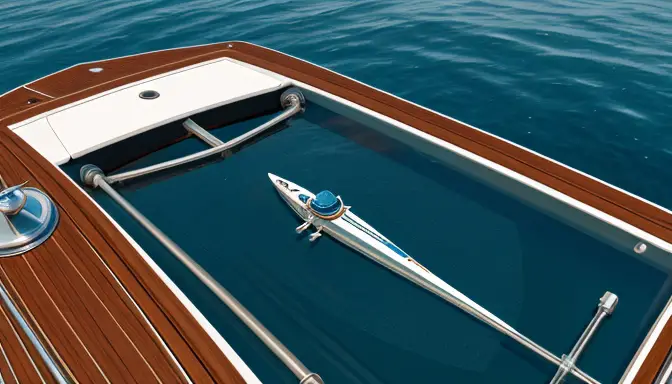When it comes to navigating your boat smoothly and efficiently, understanding the intricacies of a Hynautic steering system is crucial. By delving into a Hynautic steering parts diagram, you can gain valuable insights into how these systems operate and the role each component plays in ensuring your boating experience is safe and enjoyable.
Imagine having a detailed map that guides you through the maze of steering components, highlighting the connections and functions of each part like a well-crafted puzzle. With this knowledge at your fingertips, you can easily identify potential issues, troubleshoot problems, and even consider upgrading your system for optimal performance on the water.
By exploring the components of a Hynautic steering system through a diagram, you can visualize the inner workings of your boat’s steering mechanism like never before. From the helm pump to the hydraulic lines, each piece fits together like gears in a well-oiled machine, ensuring smooth and precise control of your vessel.
Whether you are a seasoned boat enthusiast or a novice captain, having a comprehensive understanding of Hynautic steering parts is essential for safe and enjoyable boating adventures. So, grab your metaphorical compass and set sail on a journey of discovery through the world of Hynautic steering systems!
Understanding Hynautic Steering Systems
When it comes to navigating your boat smoothly and efficiently, understanding the intricacies of Hynautic steering systems is essential. These systems play a crucial role in ensuring that your boat responds accurately to your commands, allowing for precise control on the water.
At the core of a Hynautic steering system is the hydraulic mechanism that translates the movement of the steering wheel into a corresponding change in the direction of the boat. This hydraulic system utilizes fluid pressure to power the steering, providing a seamless and responsive steering experience.
Additionally, Hynautic steering systems often feature components such as helm pumps, cylinders, hoses, and fittings, all working together to facilitate smooth and efficient steering. Understanding how these components interact is key to maintaining and troubleshooting your steering system effectively.
By familiarizing yourself with the basics of Hynautic steering systems, you can ensure that your boat stays on course and responds reliably to your navigation inputs. Whether you are a seasoned boater or a novice enthusiast, having a solid grasp of how these systems function is fundamental to a safe and enjoyable boating experience.

Components of a Hynautic Steering System
When it comes to a Hynautic steering system, understanding its components is crucial for smooth sailing. The main parts that make up a Hynautic steering system include:
- Hydraulic Helm Pump: This component is responsible for pressurizing the hydraulic fluid that powers the system.
- Hydraulic Cylinder: The cylinder converts the hydraulic pressure into mechanical force to steer the boat.
- Hydraulic Fluid: This fluid is essential for transferring force within the system and should be maintained at the proper level.
- Steering Wheel: The wheel is connected to the helm pump and allows the captain to control the direction of the boat.
- Hydraulic Lines: These lines carry the hydraulic fluid between the helm pump and the cylinder, ensuring proper steering function.
Each of these components plays a vital role in the functionality of the Hynautic steering system, and regular maintenance is key to ensuring they work together seamlessly.
Importance of Proper Maintenance
Proper maintenance of Hynautic steering parts is essential for ensuring the safety and performance of your boat. By regularly inspecting and servicing the components, you can prevent potential issues that may arise while out on the water. Neglecting maintenance can lead to malfunctions that could compromise the steering system, putting you and your passengers at risk.
One of the key reasons why proper maintenance is crucial is to extend the lifespan of your Hynautic steering system. By cleaning, greasing, and adjusting the parts as needed, you can prolong the overall durability and functionality of the system. This proactive approach can save you from costly repairs or replacements down the line.
Regular maintenance also ensures that your steering system operates smoothly and efficiently during every boating excursion. It allows you to detect any potential issues early on and address them promptly, avoiding unexpected breakdowns or failures while on the water.
To help you stay on top of maintenance tasks, consider creating a scheduled maintenance plan that includes routine checks and servicing. This can include tasks such as checking for leaks, inspecting hoses and fittings, and testing the steering response. By following a regular maintenance schedule, you can enjoy a safe and trouble-free boating experience.

Common Issues and Troubleshooting
When it comes to Hynautic steering systems, encountering common issues can be frustrating for boat owners. However, with the right troubleshooting techniques, you can quickly address these problems and get back on the water in no time. Here are some common issues you may face with your Hynautic steering system and how to troubleshoot them:
- 1. Hard Steering: If you notice that your steering wheel is difficult to turn, it could be due to low hydraulic fluid levels. Check the fluid reservoir and top it up if necessary. Air in the system can also cause hard steering, which may require bleeding the system to remove any trapped air bubbles.
- 2. Steering Wheel Play: Excessive play in the steering wheel can indicate worn-out components such as the helm pump or cylinder seals. Inspect these parts for any signs of damage and replace them if needed to restore proper steering control.
- 3. Fluid Leaks: Leaking hydraulic fluid can lead to a loss of steering control. Inspect the system for any visible leaks and tighten fittings or replace damaged hoses to prevent fluid loss.
- 4. Unresponsive Steering: If your steering system feels unresponsive or delayed, it could be a sign of air in the system or a failing helm pump. Bleeding the system and checking the pump for any issues can help resolve this problem.
By addressing these common issues promptly and following the troubleshooting steps, you can ensure that your Hynautic steering system operates smoothly and efficiently, providing you with a safe and enjoyable boating experience.
Upgrading Your Steering System
When it comes to upgrading your boat’s steering system with Hynautic parts, the possibilities are as vast as the open sea. Picture this: your current steering system is like a sturdy but outdated compass, reliable but lacking the finesse needed for smooth navigation. Now, imagine upgrading it with Hynautic parts, transforming it into a state-of-the-art GPS system, precise and responsive.
To embark on this journey of enhancement, consider the following options:
- Hydraulic Steering Upgrade: Swap out your traditional mechanical system for a hydraulic one, providing effortless steering and improved control.
- Power Steering Conversion: Enhance your steering experience by converting to power steering, reducing steering effort and fatigue.
- Electronic Steering Systems: Explore cutting-edge electronic steering systems for unparalleled accuracy and ease of use.
Each upgrade option offers a unique set of advantages, catering to different preferences and boating needs. Whether you prioritize efficiency, comfort, or technology, upgrading your steering system with Hynautic parts can elevate your boating experience to new horizons.

Installation Guide for Hynautic Steering Parts
When it comes to installing Hynautic steering parts on your boat, following a precise installation guide is crucial for ensuring optimal performance and safety on the water. Below is a step-by-step guide to help you navigate through the installation process smoothly:
- Begin by gathering all the necessary tools and equipment required for the installation, including wrenches, screwdrivers, and any specific tools recommended by the manufacturer.
- Locate the existing steering system on your boat and carefully remove any old or damaged parts that need to be replaced with the new Hynautic steering components.
- Refer to the Hynautic steering parts diagram to identify the correct placement and orientation of each component within the system.
- Securely install the new Hynautic steering parts following the manufacturer’s instructions, making sure to tighten all connections to the recommended torque specifications.
- Double-check the installation to ensure that all parts are properly aligned and securely fastened before testing the steering system.
Choosing the Right Hynautic Parts
When it comes to choosing the right Hynautic parts for your boat, it’s essential to consider various factors to ensure optimal performance and safety on the water. Here are some key points to keep in mind:
- Boat Model Compatibility: Before purchasing any Hynautic steering parts, make sure they are compatible with your specific boat model. Different boats may require different parts, so always check compatibility.
- Quality and Durability: Opt for high-quality Hynautic parts that are durable and built to withstand the harsh marine environment. Investing in quality parts will ensure longevity and reliability.
- Functionality: Consider the functionality of the steering parts and how they will enhance the performance of your boat. Choose parts that will improve steering responsiveness and overall control.
- Consultation: If you’re unsure about which Hynautic parts to choose, don’t hesitate to consult with a professional or the manufacturer for guidance. They can provide expert advice based on your specific needs.
Frequently Asked Questions
- What are the common signs that indicate my Hynautic steering system needs maintenance?
Common signs include increased steering effort, unusual noises while turning the wheel, or fluid leaks around the steering components.
- How often should I perform maintenance on my Hynautic steering system?
It is recommended to perform regular maintenance at least once a year or as per the manufacturer’s guidelines to ensure optimal performance and safety.
- Can I upgrade my boat’s steering system with Hynautic parts on my own?
While it is possible to upgrade your steering system yourself, it is advisable to consult a professional or refer to the installation guide to ensure proper installation and functionality.
- What factors should I consider when choosing Hynautic steering parts for my boat?
Consider factors such as your boat’s model, size, steering system compatibility, and your specific boating needs to select the right Hynautic parts for optimal performance.
- What Happened to Bluewater Yachts? The Inside Story - May 31, 2024
- Upgrade Your Boat’s Water Pump to the Mach 5 - May 30, 2024
- Upgrade Your Boat with the Big Stuff Stuffing Box - May 30, 2024


